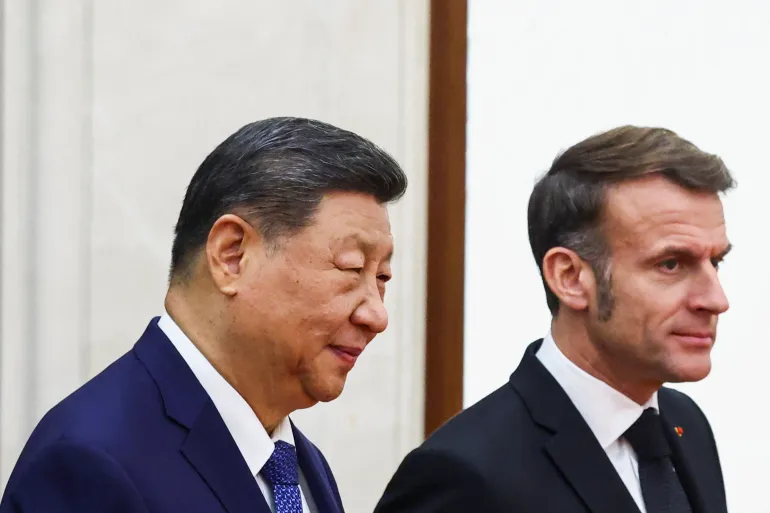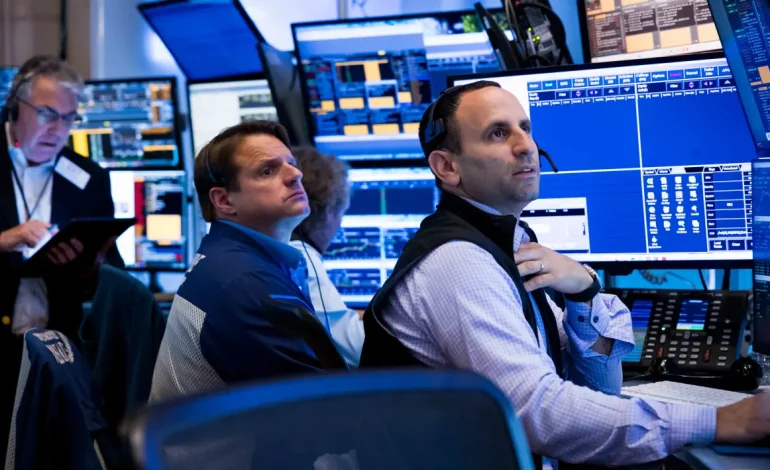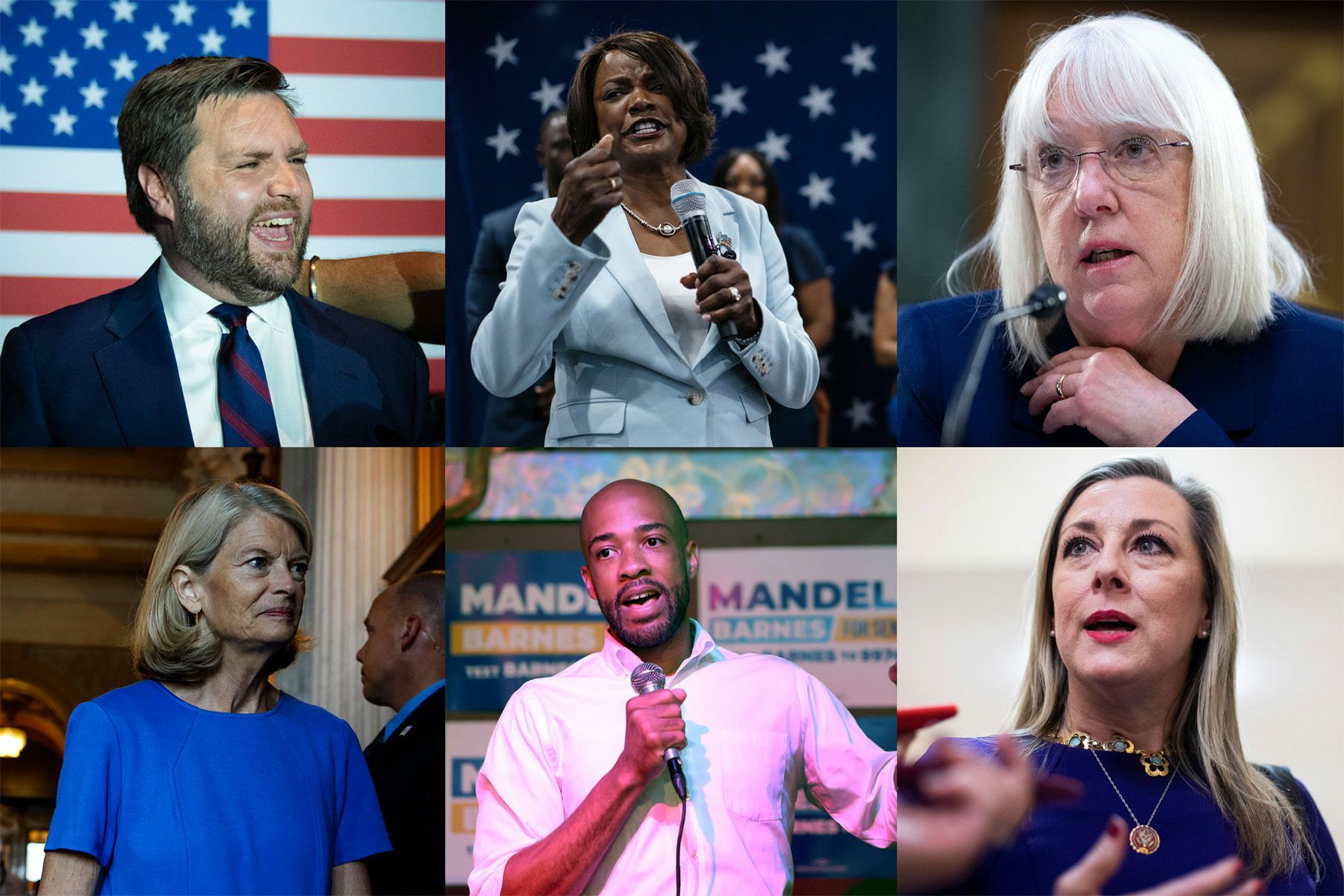The second half of 2025 kicks off amid conflicting signals from financial markets and mounting political uncertainty, leaving investors facing a complex and potentially volatile environment.
While the S&P 500 and Nasdaq Composite notched record highs to close out the second quarter, Tuesday’s market action showed signs of hesitation. The S&P 500 slipped 0.2%, and the Nasdaq fell 1%, weighed down by sharp losses in Tesla and top AI names like Nvidia. The Dow Jones Industrial Average, however, rose 0.9% as a handful of industrial and retail names bucked the broader trend.
Adding to the crosscurrents, the US dollar has recorded its weakest start to a year in more than five decades, raising concerns about a potential revival of the so-called “sell America” trade, particularly as tariff tensions and fiscal policy debates intensify in Washington.
President Donald Trump’s ambitious trade and tax agenda has emerged as a central market theme. His proposed “90 deals in 90 days” strategy to renegotiate tariffs has produced only limited progress, even as the clock ticks toward the expiration of a temporary pause on the harshest levies. Markets have been particularly sensitive to shifting signals about whether Trump will reimpose sweeping import taxes.
The Senate on Tuesday narrowly passed Trump’s expansive tax-and-spending bill, which includes significant tax cuts and structural changes to federal entitlement programs. The legislation now returns to the House ahead of a self-imposed July 4 deadline. But its long-term fiscal implications — including a projected $3.3 trillion increase in the national debt over the next decade — are already causing concern.
“The legislation could help near-term growth,” said Zachary Hill of Horizon Investments. “But if it triggers higher interest rates due to debt concerns, markets could adjust quickly.”
The Federal Reserve remains a key player in this evolving picture. Chair Jerome Powell reiterated Tuesday that the central bank is in “wait-and-see mode”, as it monitors the economic effects of Trump’s tariff strategy and spending policies. Powell suggested the Fed likely would have already cut rates if not for the inflation risks posed by new trade barriers.
“We went on hold when we saw the size of the tariffs,” Powell said at a European Central Bank panel in Portugal.
Some Fed officials and economists believe the central bank could still lower rates later this year — but only if signs of labor market deterioration or slower growth become more pronounced. Goldman Sachs recently moved up its forecast for a rate cut from December to September, citing modest inflation and early indications that tariffs may have a smaller-than-expected price impact.
Several corporate and macroeconomic indicators reflect the uncertainty:
Tesla shares fell sharply Tuesday following renewed public tension between Trump and CEO Elon Musk, with the president suggesting that Musk’s companies should face a subsidy review.
Tech names like Nvidia and AI-linked stocks also dropped, cooling recent enthusiasm around the sector.
The 10-year Treasury yield edged up to 4.26%, signaling investor caution amid mixed signals on inflation and growth.
The dollar’s steep decline — its worst first-half performance since the 1970s — raises questions about long-term confidence in US fiscal and trade policy.
Meanwhile, investors are closely watching consumer data and trade volumes for signs of resilience or retrenchment. US GDP contracted slightly last quarter, and consumer spending has softened. A proposed cut in taxes under the GOP bill could boost demand — but could also raise borrowing costs if deficit projections worsen.
Despite the headwinds, some analysts point to growing investor exuberance. A Barclays research note warned that measures of speculative activity are approaching levels last seen during the meme stock frenzy of 2021 and the dot-com bubble of the early 2000s.
“Market bubbles are infamously difficult to predict,” wrote Barclays strategists. “But the signs of froth are there — in demand for blank-check companies, surging small-cap momentum, and overbought sentiment indicators.”
While the US economy has shown resilience so far, with mixed but mostly positive data on manufacturing and job openings, investors face a long list of variables heading into the third quarter:
The final outcome of Trump’s policy bill
A possible re-escalation in global trade tensions
Growing questions around the Federal Reserve’s independence
Ongoing uncertainty in tech, AI, and energy policy
For now, Wall Street continues to climb, even if a correction — or further volatility — may be waiting in the wings. As Deutsche Bank strategist Henry Allen noted:
“One of the biggest risks in Q3 is that markets are pricing in too much hope and not enough uncertainty.”
With input from the New York Times, CNBC, the Associated Press, and Investor’s Business Daily.










The latest news in your social feeds
Subscribe to our social media platforms to stay tuned